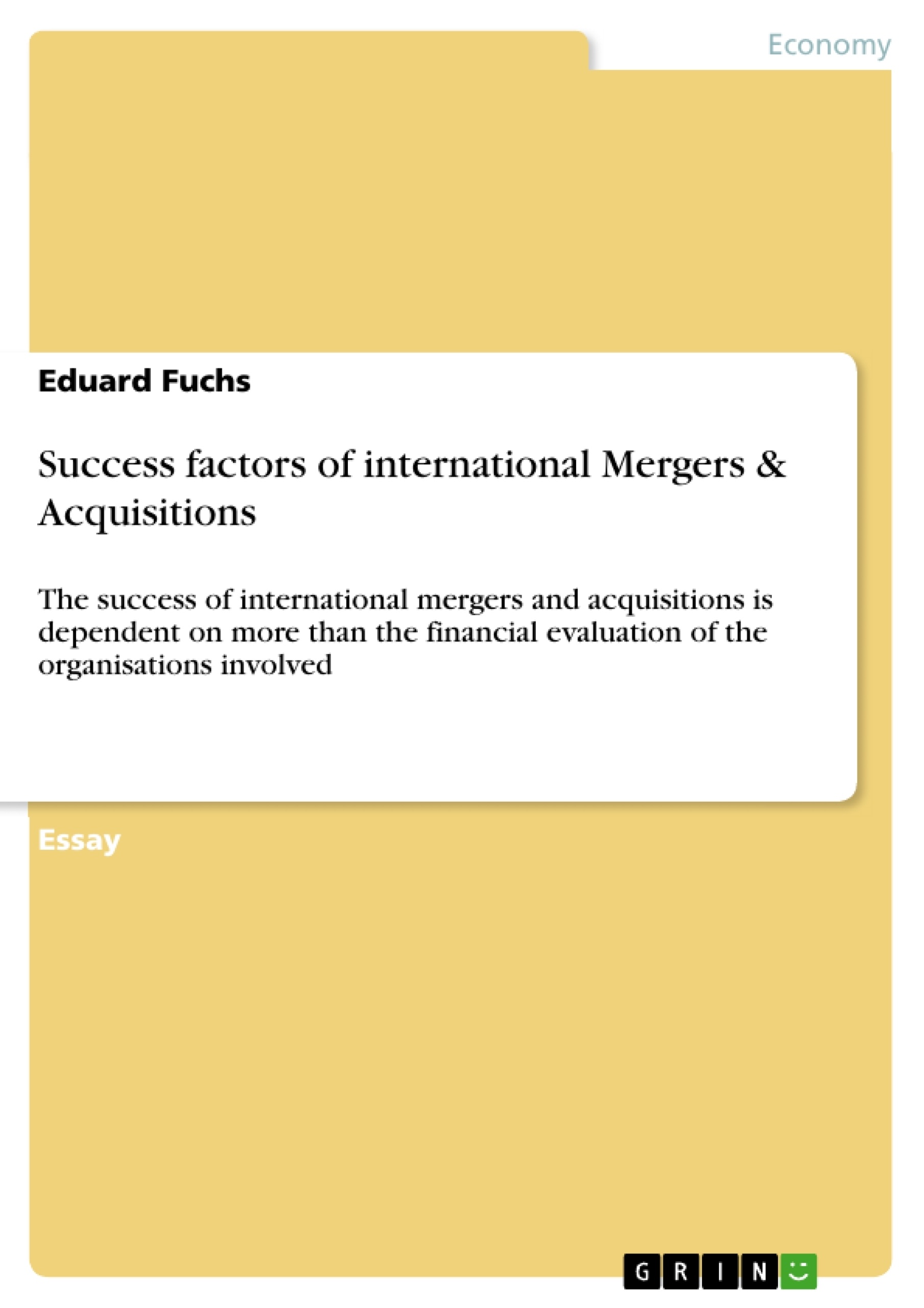The history of mankind is marked by the striving of a person to surpass oneself. In the early days growth was mainly achieved by enlarging the own family, and during the times of sedentarisation growth was achieved by claiming more areas of arable land. These two human characteristics have survived to the present day and have been transferred into modern world economy – on the one hand striving for more and on the other hand the increase of own power or influence. Nowadays those men are called entrepreneurs, and they take care of these things in the economic world through Mergers and Acquisitions.
Therefore, it is hardly surprising that this kind of enterprise growth has found more and more approval in the course of the last years. It is easy to recognize that development by comparing the impressively increasing transaction volumes.
That this trend will obviously continue has been confirmed by one of the most recent surveys conducted by the Boston Consulting Group (Kronimus et al., 2009). According to the survey every fifth company in Europe plans an acquisition in the year 2010 – in spite of the continuing economic crisis.
These figures look impressive, but if one gets deeper into the subject, one realises that almost 70% of these mergers do not achieve the intended objectives (Palmer, n.d.), or are even regarded as a complete failure (Habeck et al., 2000). Remarkable is the fact that there are even unsuccessful mergers involving financially sound companies. Therefore, it can be concluded that the success of a merger or a takeover not only depends on the financial evaluation of the involved organisations but rather that there must be other factors which play a significant role. These other factors will be identified in this paper and their importance will be critically discussed.
Inhaltsverzeichnis (Table of Contents)
- Introduction
- Classification and Definition of Terms
- Merger
- Acquisition
- Economical relevance of international M&A
- Expected vs. Realised Benefit
- Critical Factors of Success for M&As
- General Considerations and Chosen Approach
- Management and Leadership in International M&As
- Demands on Communication
- Culture, People and Change
- Conclusion
Zielsetzung und Themenschwerpunkte (Objectives and Key Themes)
This essay explores the critical success factors for international mergers and acquisitions (M&A), focusing on the aspects that go beyond mere financial evaluation. It aims to identify and analyze the key factors that contribute to the successful integration of companies from different cultural backgrounds.
- The importance of non-financial factors in M&A success.
- The role of management and leadership in international M&As.
- The critical impact of communication and cultural differences.
- The need for effective change management and employee engagement.
Zusammenfassung der Kapitel (Chapter Summaries)
- Introduction: The essay begins by outlining the increasing trend of M&A activity, highlighting the significant growth in transaction volumes. It notes that a high percentage of mergers fail to achieve their intended objectives, suggesting that financial evaluation alone is not sufficient for success. This sets the stage for exploring the critical factors that contribute to successful international M&As.
- Classification and Definition of Terms: This section provides a clear definition of key terms like merger and acquisition, emphasizing the importance of understanding these concepts within the context of international M&A. It further explores the economic significance of international M&A, including the potential benefits and challenges associated with this type of transaction.
- Critical Factors of Success for M&As: This chapter delves into the key factors that determine the success of M&As, focusing on aspects like leadership, communication, culture, and change management. It outlines the crucial role of effective communication in facilitating integration and addresses the impact of cultural differences on the integration process. It also highlights the importance of employee commitment and involvement as a major factor in M&A success.
Schlüsselwörter (Keywords)
The core keywords and themes of this essay include international mergers and acquisitions, success factors, management and leadership, communication, cultural differences, change management, employee commitment, integration, and the challenges and opportunities associated with cross-border transactions.
- Quote paper
- Eduard Fuchs (Author), 2010, Success factors of international Mergers & Acquisitions , Munich, GRIN Verlag, https://www.grin.com/document/155786



